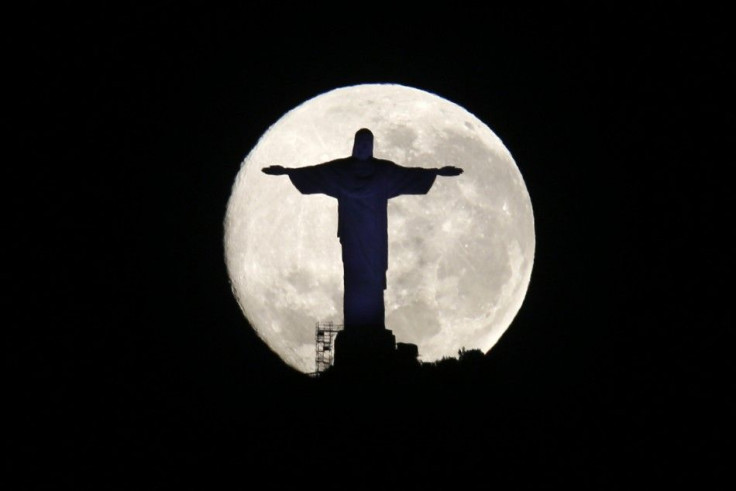Final Supermoon Of The Lunar Trilogy To Light Up The Sky [Watch Videos Of The First Two Supermoons]

The final supermoon of the three supermoons of 2014 will be seen on the night of Sept. 9, and the next opportunity to see it would be on Jan. 20, 2015. The first two supermoons were sighted on July 12 and Aug. 10 this year. The only factor that could come in the way of watching the final supermoon is the weather.
Full moons, at first sight, might look the same as the supermoon, but upon closer inspection, it is seen that the moon's elliptical orbit is around the Earth, making it bigger and brighter, reports Noozhawk. This phenomenon is known as the "Perigee Moon."
Scientists say that the phenomenon happens every 13 months, on an average. When the full moon appears 30 percent brighter and 14 percent bigger, then it is termed as a "supermoon."
An explanation by NASA Science website says that astronomers believe that the supermoon is mostly illusory. The explanation goes like this:
"The illusion occurs when the moon is near the horizon. For reasons not fully understood by astronomers or psychologists, low-hanging moons look unnaturally large when they beam through trees, buildings and other foreground objects. When the moon illusion amplifies a perigee moon, the swollen orb rising in the east at sunset can seem super indeed."
Once a month, a perigree happens, an event when the moon is at its closest to the Earth and appears larger in diameter. Since the moon passes opposite the sun at this time, the moon is illuminated. When a perigree and a full moon coincide, the result is a supermoon, or the more scientifuc term "a perigree full moon."
"It's the marriage of the two occurrences when we get a brighter and larger-than-normal full moon," Geza Gyuk, an astronomer at the Adler Planetarium in Chicago, told the National Geographic.
"While this is nothing special from a science perspective, it is no doubt very poetical and very romantic," he added.
A report by National Geographic said that the full phase of the moon will happen at 9:38 p.m. on Sept. 8 but at 11:38 p.m. on Sept. 7, it will be closest to the Earth, at a distance of 222,698 miles.
The National Weather Service has said that the skies would be sunny on Sept. 9 but then patchy fog and cloudy conditions are predicted for the night.
YouTube/ Fred Bouchal
Youtube/ Fred Bouchal




















